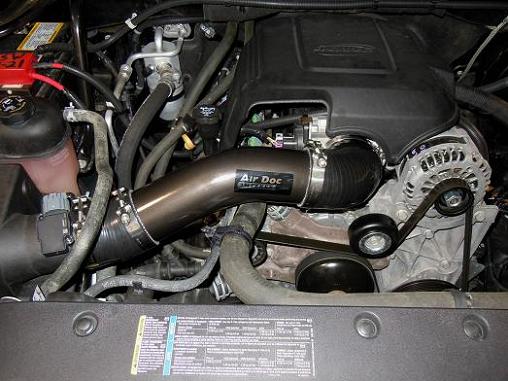gathermewool
Site Donor 2025
Originally Posted By: 05Blazer
From Trusted GM employee at the assembley plan:
You don't need a tune with a cold air intake. The internet forums are wrong. The air still passes thru the MAF sensor and that tells the engine how much air is coming in. The baffles are for noise cancellation purposes.
Sorry, but your buddy is 100% wrong on this front. The Mass Airflow sensor is scaled and its values entered into your ECU's memory (it's essentially a lookup table.) If you change the diameter or geometry of your intake, then a larger amount of air could be sucked past the MAF sensor without the MAF sensor actually accounting for it all, since less air would flow past the sensor for the same overall volume.
In this case, the FEEDBACK would be via the ECU reading the discrepancy in the O2 sensor reading from what it what it looked up in that cells respective fueling table and adding or subtracting fuel as necessary. Even if your fuel trims are stored in memory doesn't mean that there won't be times when your ECU can't account for the discrepancy in what tube the MAF sensor was scaled to work with and what you installed. You must either rescale your MAF to work with the new intake or rely upon the ECU to adjust your fuel trim.
Again, the MAF sensor will not account for a change in your intake. The ECU will receive a lean reading from the O2 sensor and adjust your fuel trim after the fact. I'm sure every vehicle is different, but this is how my Subie operates, and this is how I believe all MAF-based fueling systems operate.
From Trusted GM employee at the assembley plan:
You don't need a tune with a cold air intake. The internet forums are wrong. The air still passes thru the MAF sensor and that tells the engine how much air is coming in. The baffles are for noise cancellation purposes.
Sorry, but your buddy is 100% wrong on this front. The Mass Airflow sensor is scaled and its values entered into your ECU's memory (it's essentially a lookup table.) If you change the diameter or geometry of your intake, then a larger amount of air could be sucked past the MAF sensor without the MAF sensor actually accounting for it all, since less air would flow past the sensor for the same overall volume.
In this case, the FEEDBACK would be via the ECU reading the discrepancy in the O2 sensor reading from what it what it looked up in that cells respective fueling table and adding or subtracting fuel as necessary. Even if your fuel trims are stored in memory doesn't mean that there won't be times when your ECU can't account for the discrepancy in what tube the MAF sensor was scaled to work with and what you installed. You must either rescale your MAF to work with the new intake or rely upon the ECU to adjust your fuel trim.
Again, the MAF sensor will not account for a change in your intake. The ECU will receive a lean reading from the O2 sensor and adjust your fuel trim after the fact. I'm sure every vehicle is different, but this is how my Subie operates, and this is how I believe all MAF-based fueling systems operate.
Last edited:





